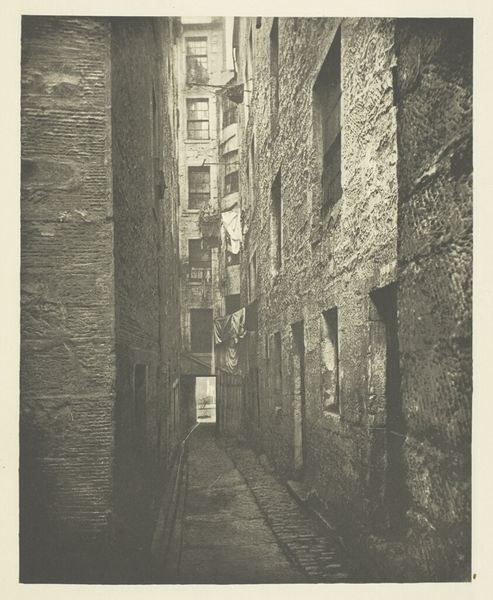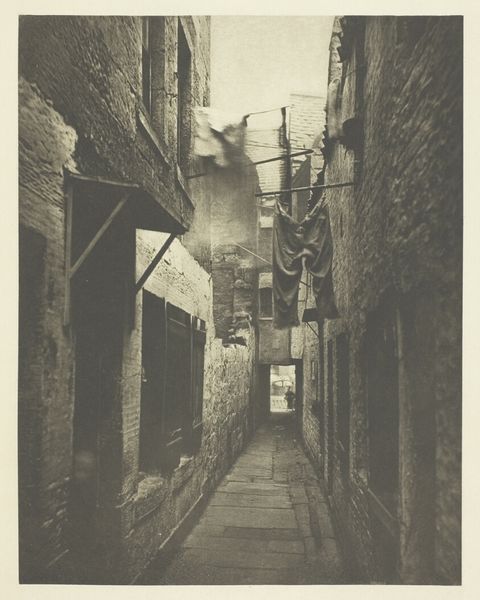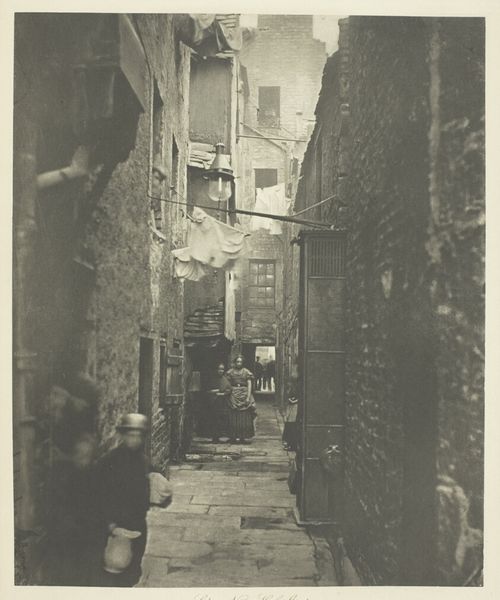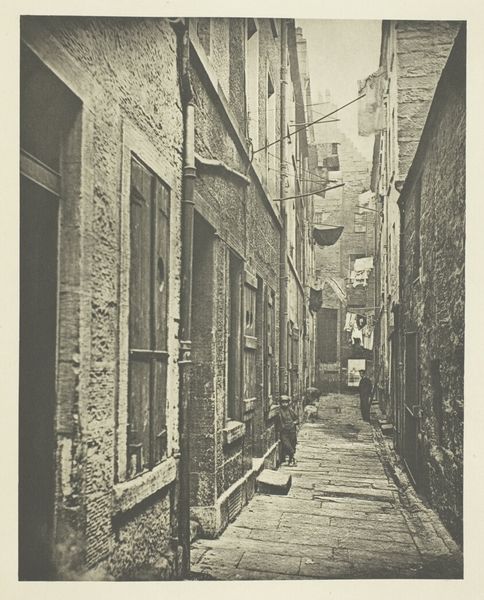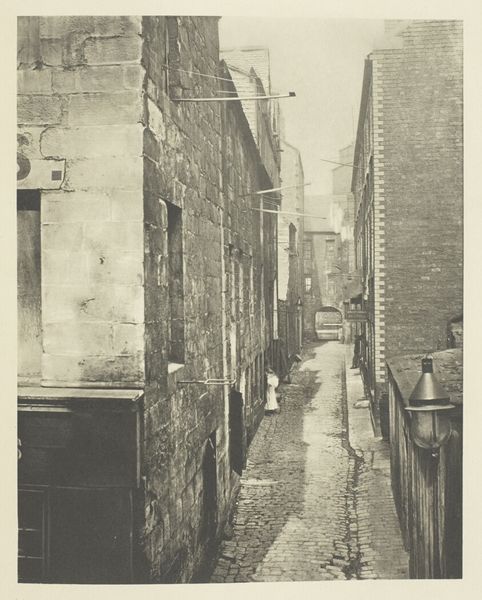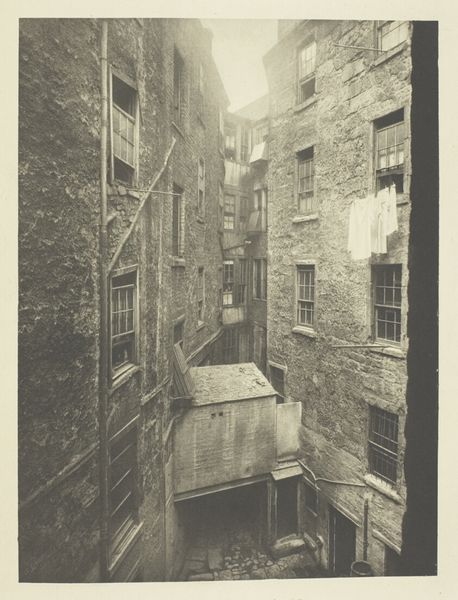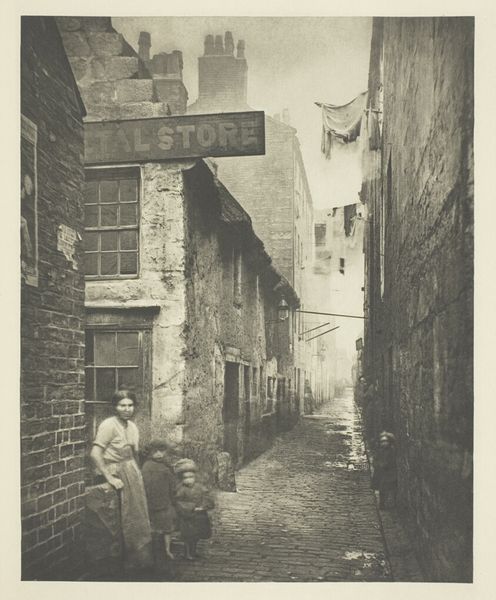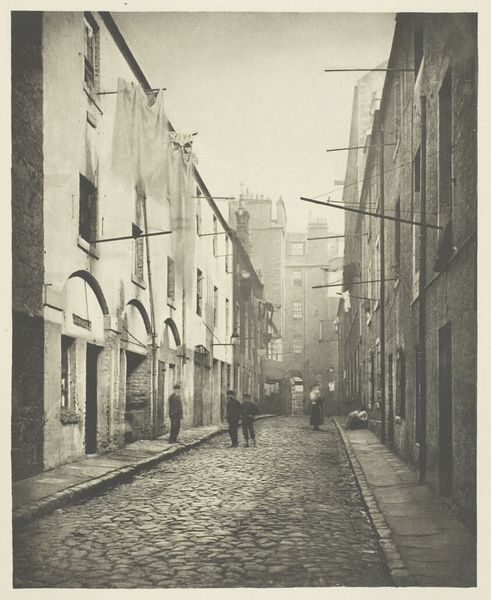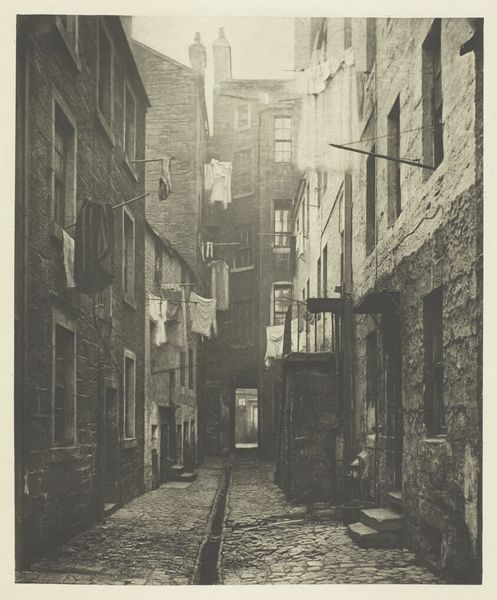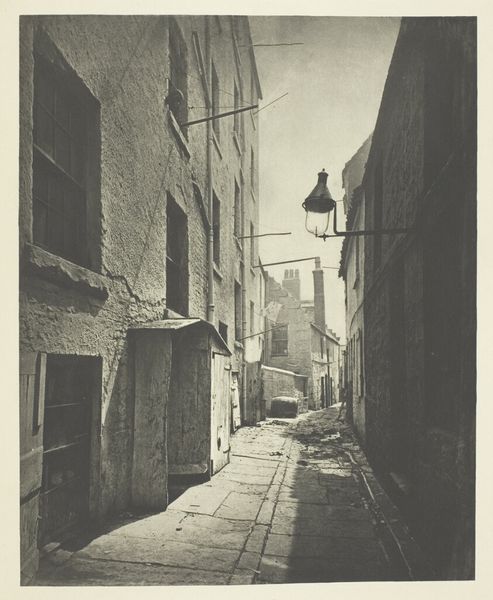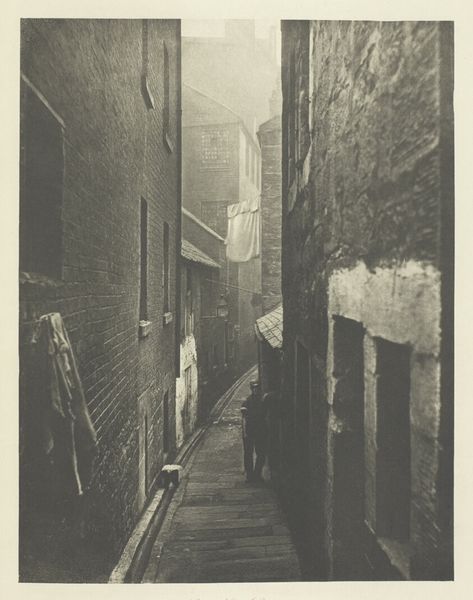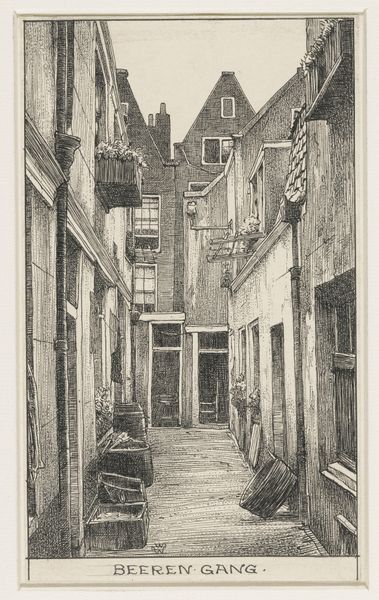
Dimensions: 22.2 × 17.6 cm (image); 38.2 × 27.3 cm (paper)
Copyright: Public Domain
Curator: This is "Close No. 83 High Street," a gelatin silver print created around 1868 by Thomas Annan. It's currently part of the collection at The Art Institute of Chicago. Editor: Immediately, the oppressive atmosphere strikes me. The severe lines of the buildings, the cobblestone street receding into a misty nothingness – it’s all deeply unsettling, creating an acute sense of enclosure. Curator: It's an important document of urban change, or rather, urban destruction. Annan was commissioned to record the old closes, these narrow alleyways and tenements of Glasgow, before they were demolished to make way for modern improvements. It's important to recall the role of photography at this time – to expose and reform social ills. Editor: Observe the masterful use of light and shadow. The limited palette of tones guides our gaze down the constricted pathway. The contrasting textures, from the rough stonework to the smoother planks bridging the gap overhead, heighten the visual tension. The way he harnesses shadow is critical to the overall mood. Curator: Absolutely. Think about the history embedded in those stones, though. This wasn't just about aesthetics. These "closes" were sites of extreme poverty and disease. Annan’s photographs bring into sharp focus the human cost of industrial progress and the immense inequalities present in Victorian society. This perspective also allows us to engage with notions of collective memory. Editor: You’re right. Beyond the compositional strength, the stark monochrome treatment amplifies the emotional weight. It reduces the scene to its essence, highlighting the underlying geometry of urban space but equally abstracting its lived-in reality, to emphasize, as you say, this social observation. Curator: And while the pictorialist style evokes artistic interpretation, we must not shy away from examining the narrative through a critical race lens. Who lived in these spaces, and how were their lives impacted by these demolitions? The photograph functions not merely as aesthetic pleasure but as an indictment. Editor: That push-pull, that visual allure coupled with grim context makes this photograph so engaging, I believe. Its geometric austerity leaves one both unsettled and intrigued. Curator: It provides a window into a past we must remember and question, pushing us to confront persistent systemic inequities, the kinds we still grapple with. Editor: Indeed, Annan’s study of composition and structure simultaneously illuminates social context. Fascinating how formal rigor enhances the content here.
Comments
No comments
Be the first to comment and join the conversation on the ultimate creative platform.
